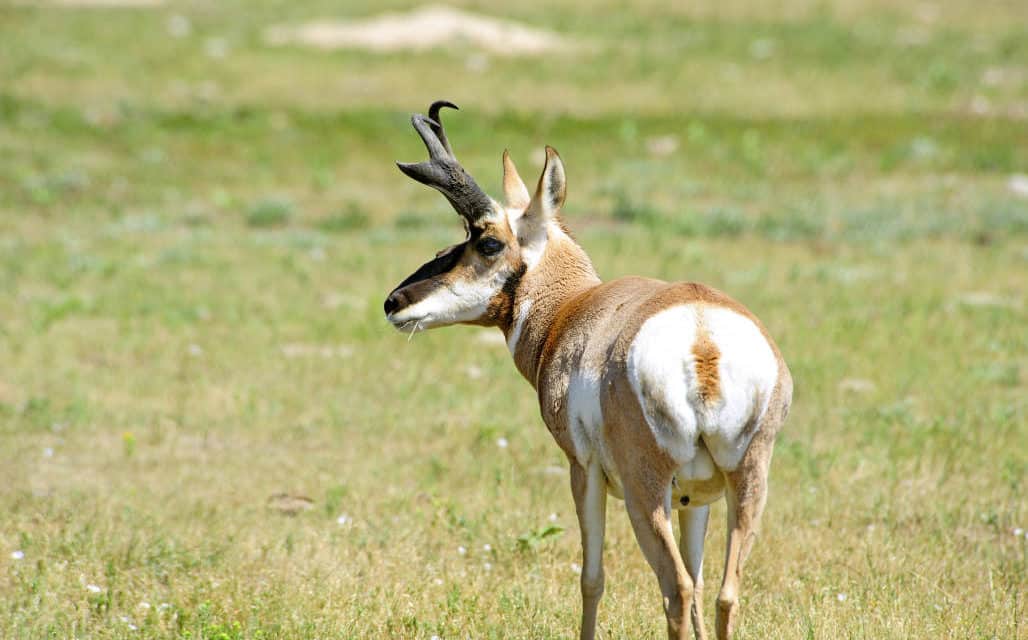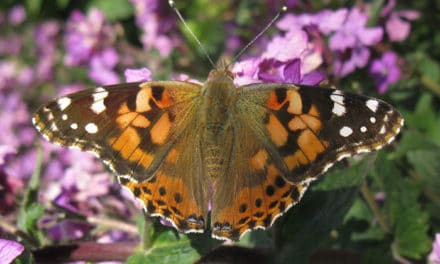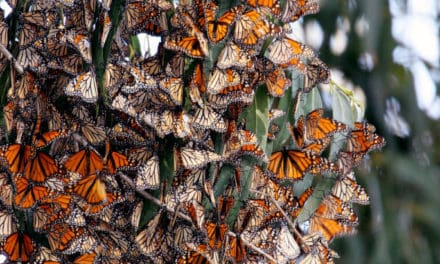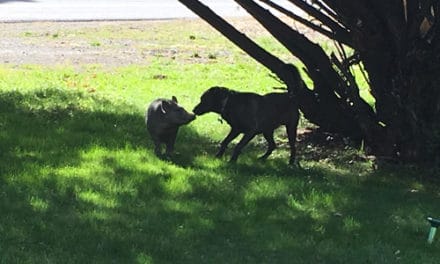By Melissa Wynn
On the sage brush dotted lands where the Sierras meet the Great Basin lives Antilocapra americana, the last surviving member of the family Antilocapra. This fancy handle belongs to the North American Pronghorn, commonly referred to as the Antelope. Literally translated this scientific name means “American antelope goat.” Ironically, since this majestic mammal is neither antelope nor goat.
Branched horns are only the first thing that make this ungulate (animal with hooves) unique in the animal kingdom. Their one of a kind horns are comprised of a hollow sheath over a bony center that grows from the skull just above the large, dark eyes. Not only do Pronghorns have the only forked horn, they are also the only animal to shed their horns each year. Although deer shed their spectacular branched head pieces annually, they possess antlers, not horns. Both genders of Pronghorn wear horns. Females grow a short 3-4 inch set while the mature bucks can sport an impressive rack up to 20 inches tall.
Pronghorn are native only to North America and are the fastest land mammal on the continent. Second only to the cheetah world wide, the proud Pronghorn can reach speeds over of 50 mph. Although the cheetah wins the race in short bursts, the stealthy Pronghorn can speed over 25 mph for hours at a time. At a tender 3 or 4 days old, a baby Pronghorn can easily outrun a human being.
Pronghorn fawns are born in May or June and spend the first few days instinctively laying motionless in the grass. These tiny 4-12 pound infants are born with no natural scent, making them harder for predators like coyotes and bobcats to locate them. Pronghorn often give birth to twins and mothers are known to hide them separately while grazing nearby. After nursing her young for few weeks in solitude, the mother and fawns return to the herd.
It’s not surprising that the amazing Pronghorn outlived those similar to their kind. Masters of the survival game, Pronghorn are also gifted with amazing eyesight. Their big, beautiful eyes can detect motion an unbelievable four miles away. When one member of the herd detects danger it alerts the rest by puffing the hair on their white rump into a sort of flower pattern. Even those grazing far from the rest can easily see this visual warning and make a run for it.
Found only in the wild open spaces of the west, the North American Pronghorn is our most unique neighbor. Next time you are lucky enough to spot a herd, take a minute to stop and watch them. Their speed and agility are an amazing site to behold. Watch them and know that you are seeing a creature that is truly unique on our big blue planet Earth.
Facts courtesy of desertusa.com.












